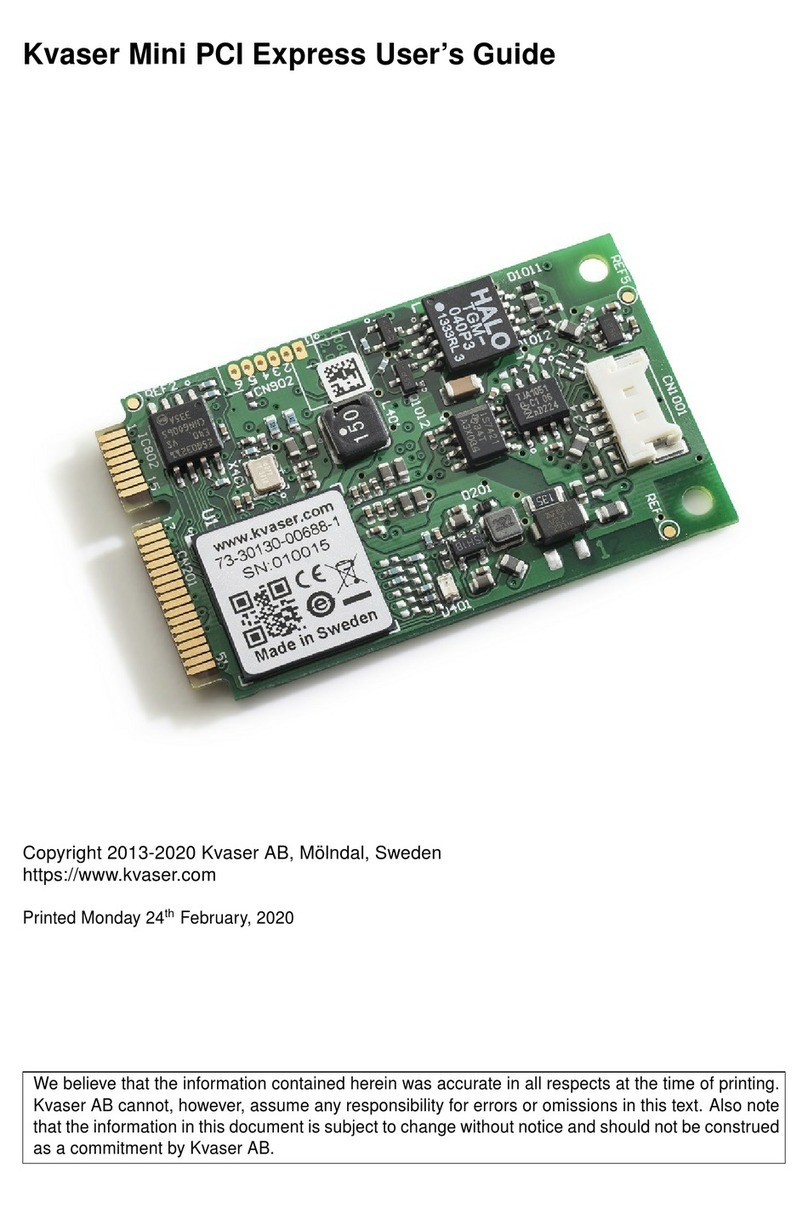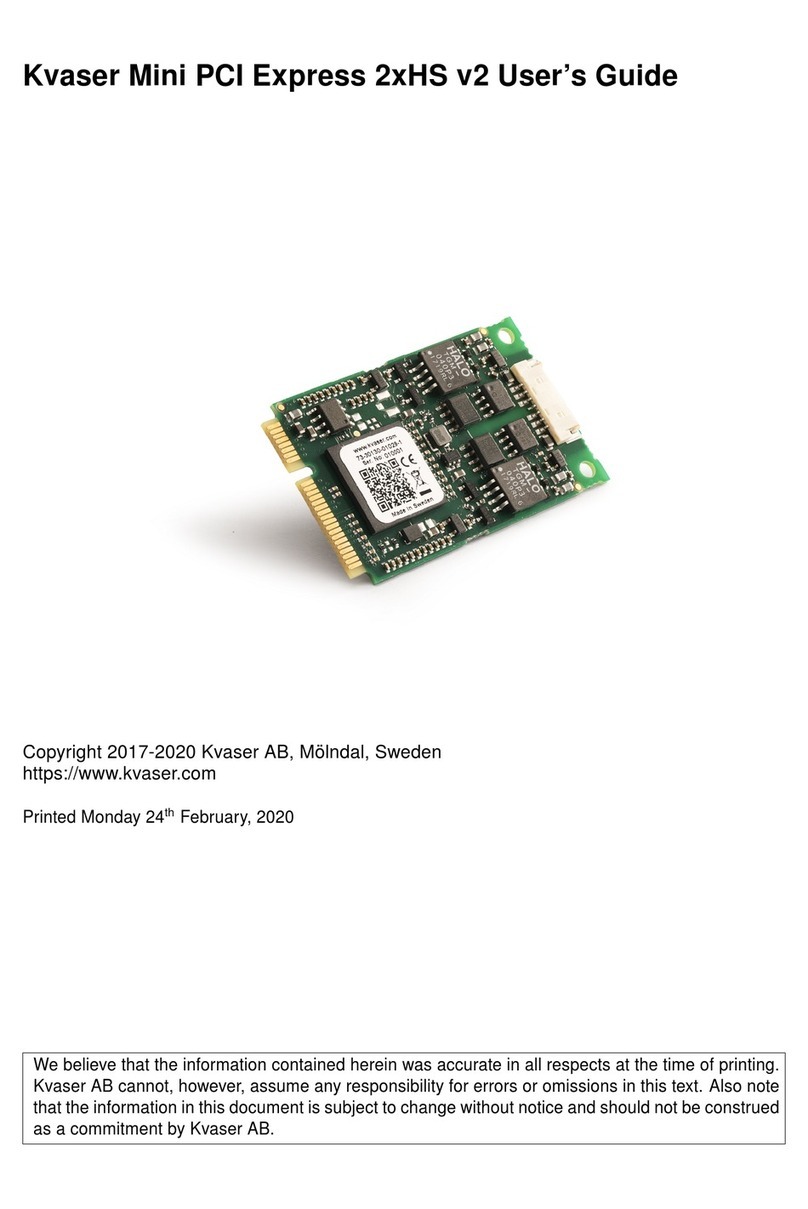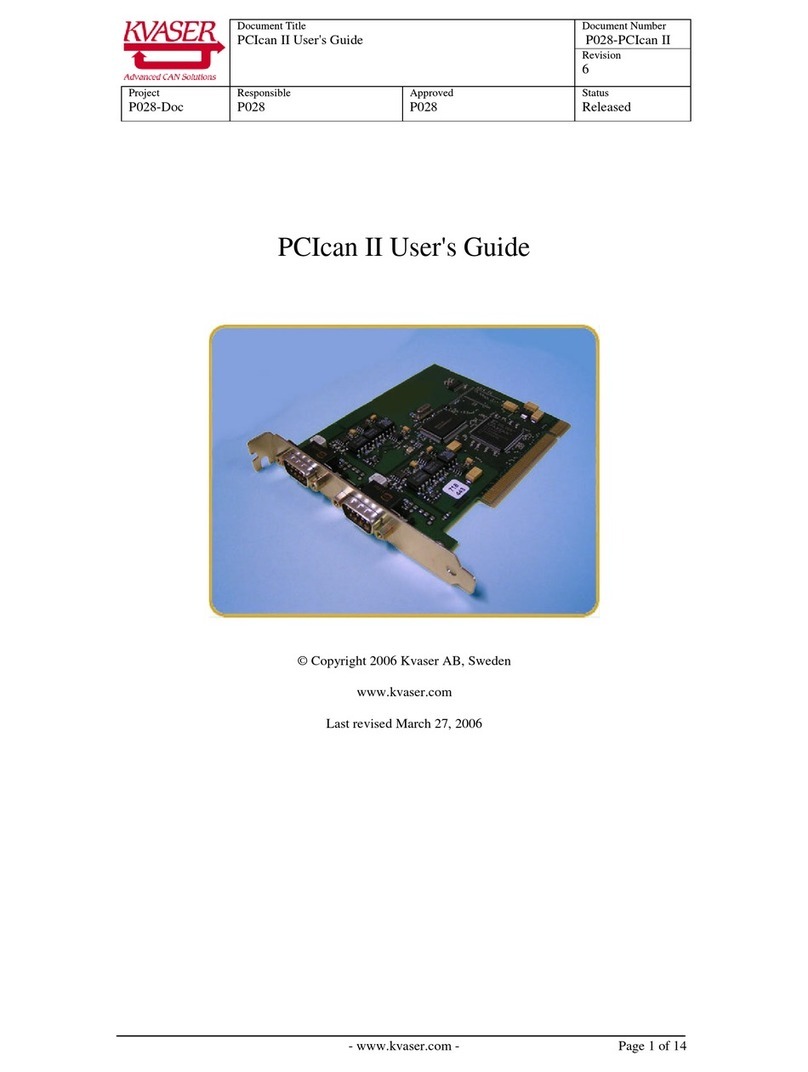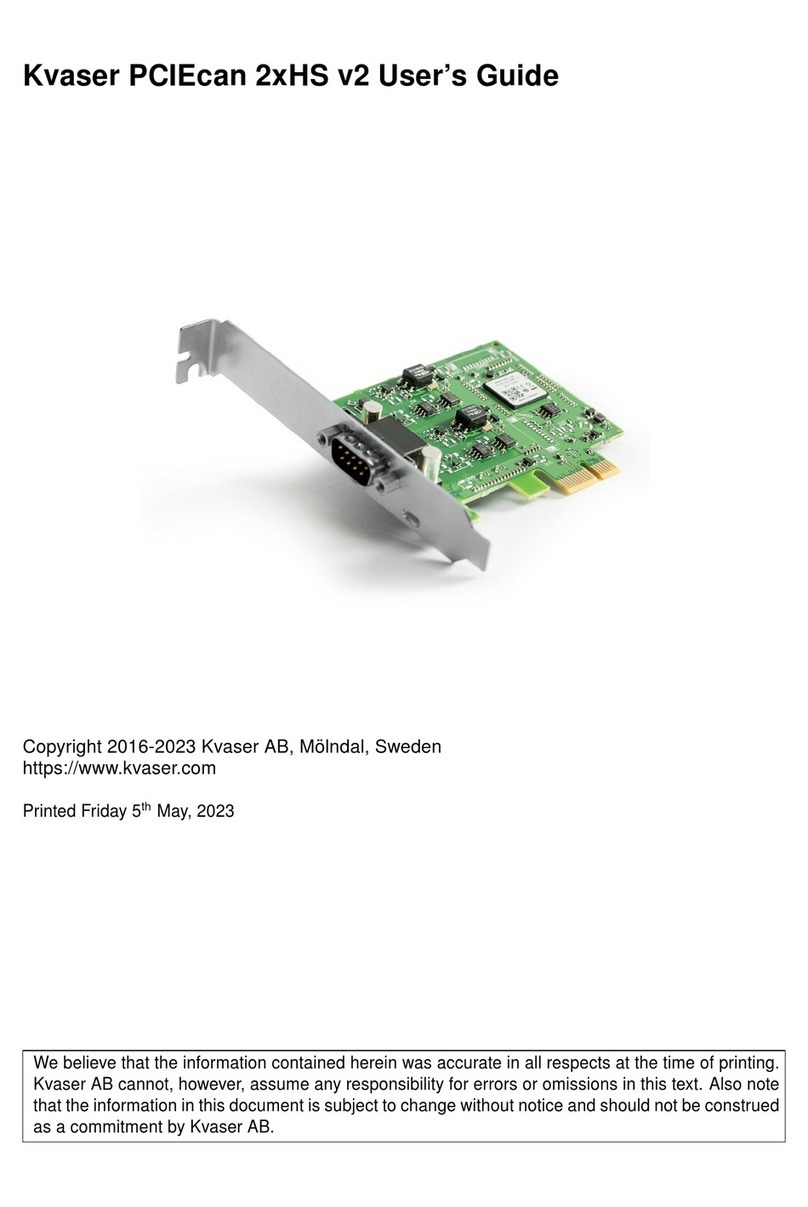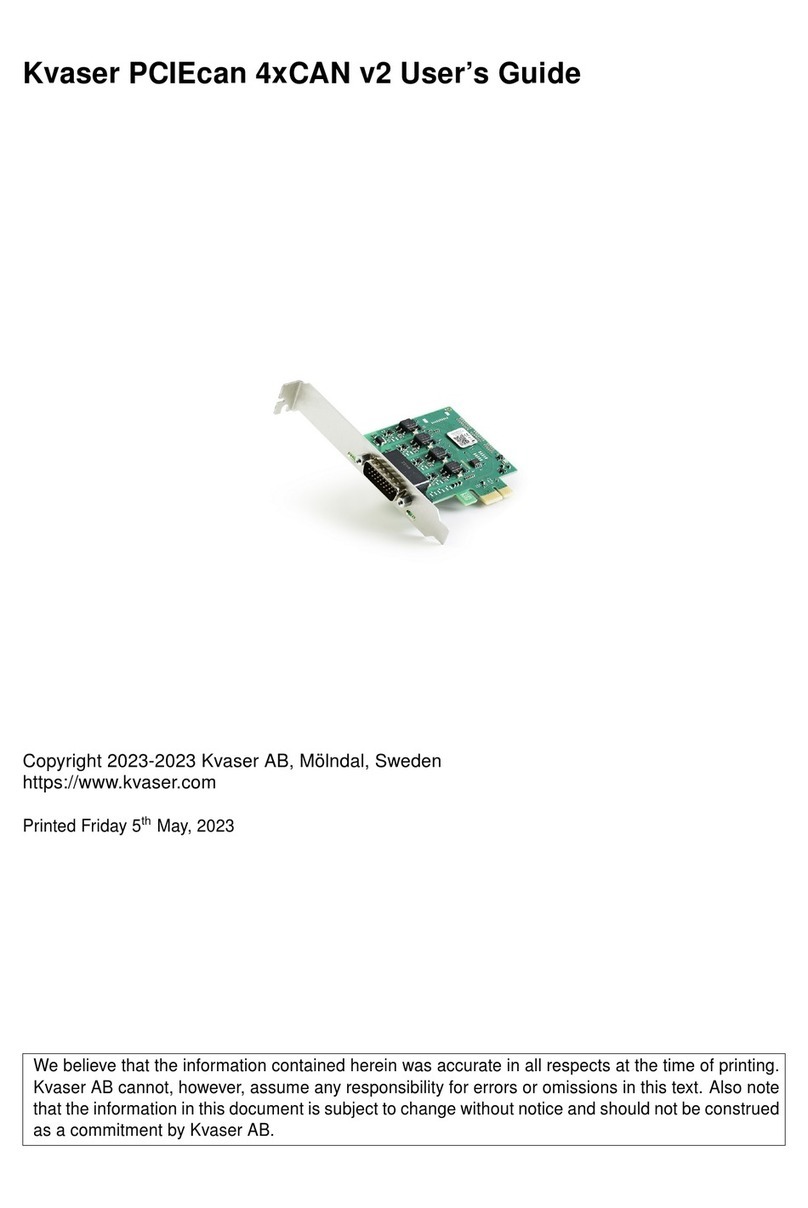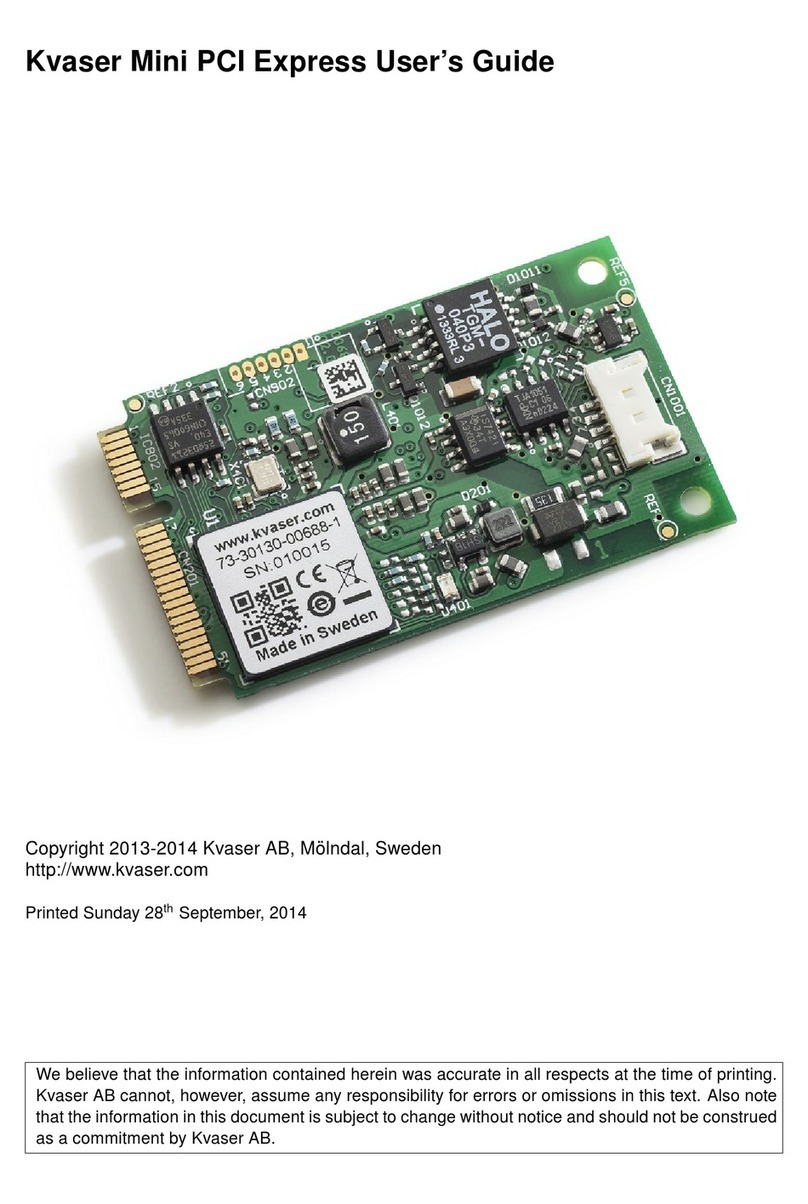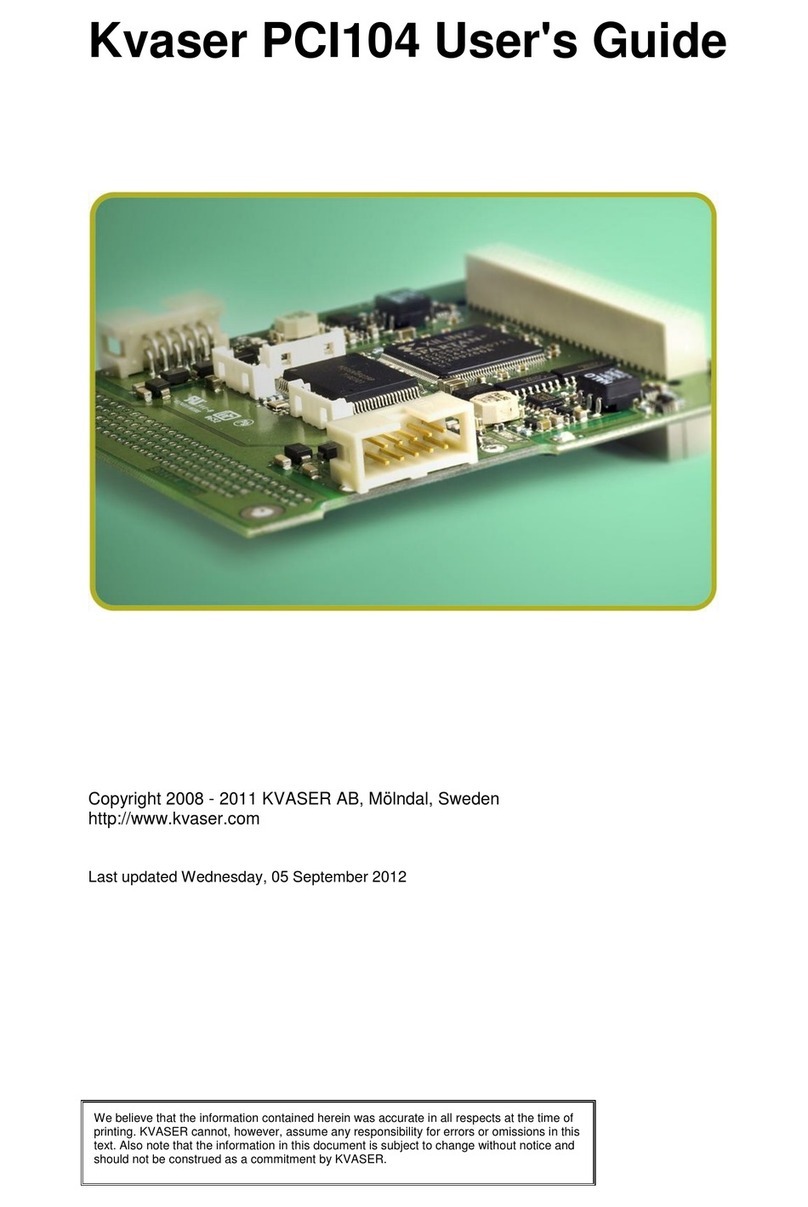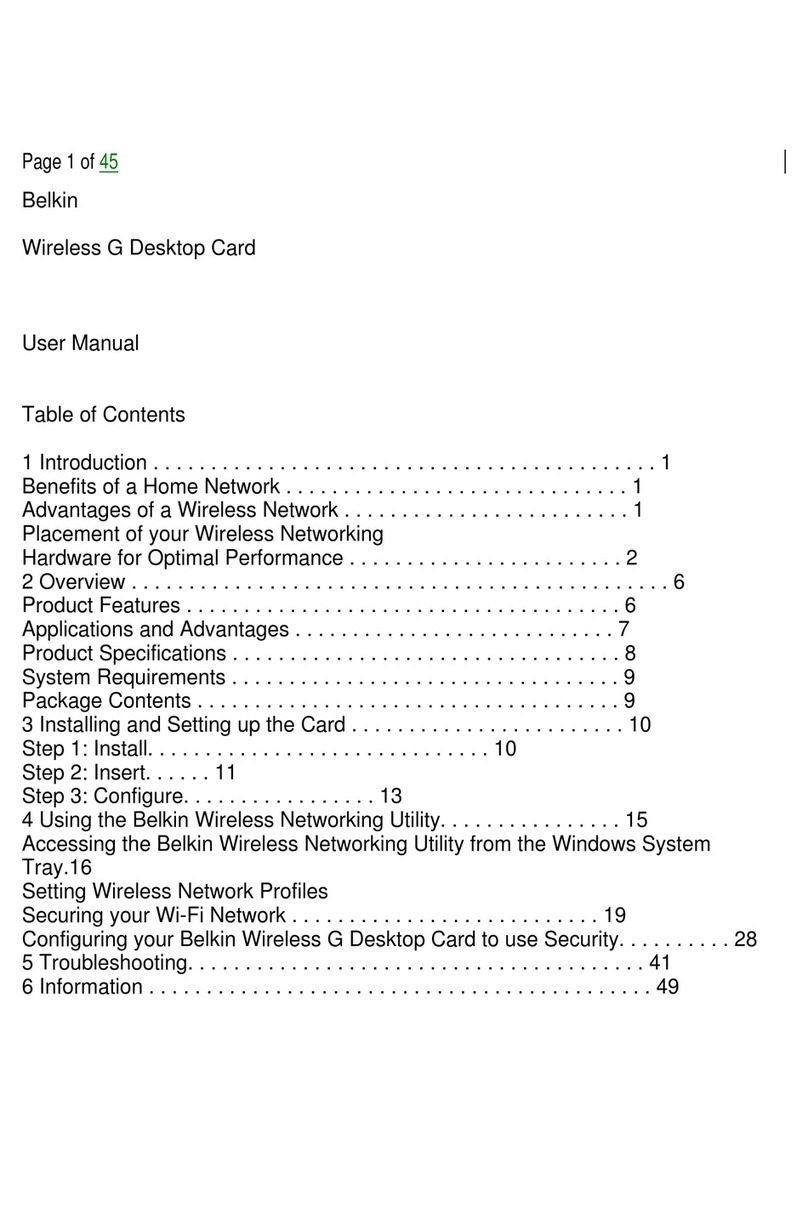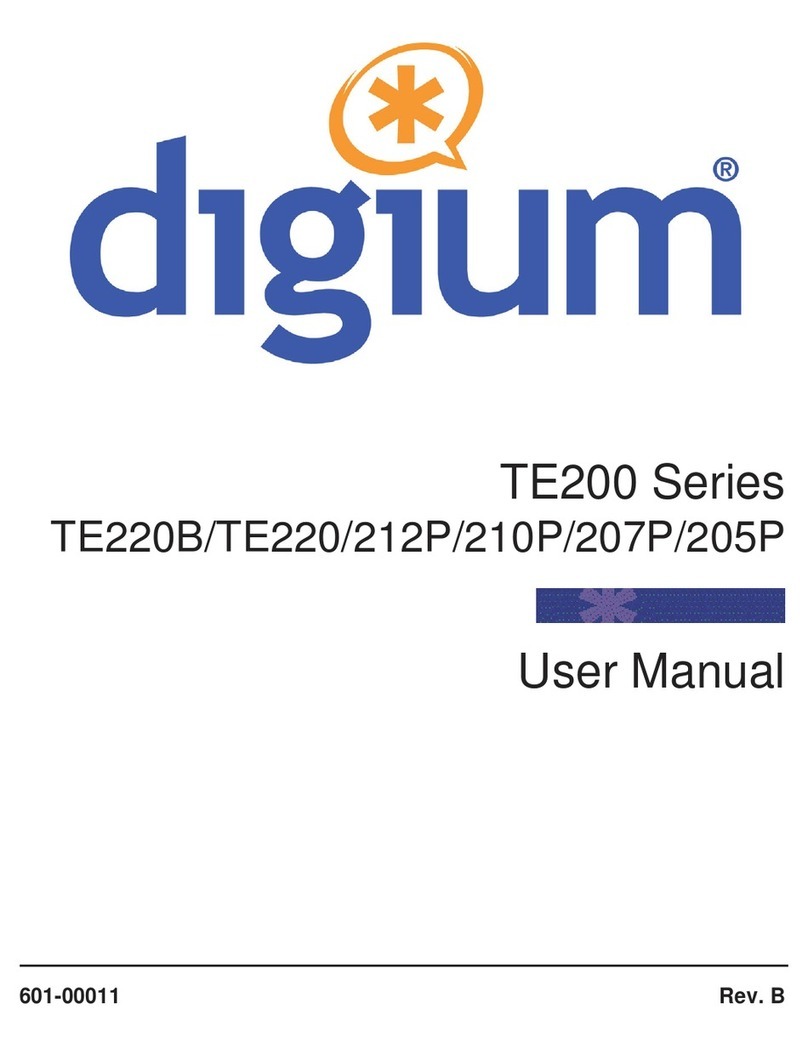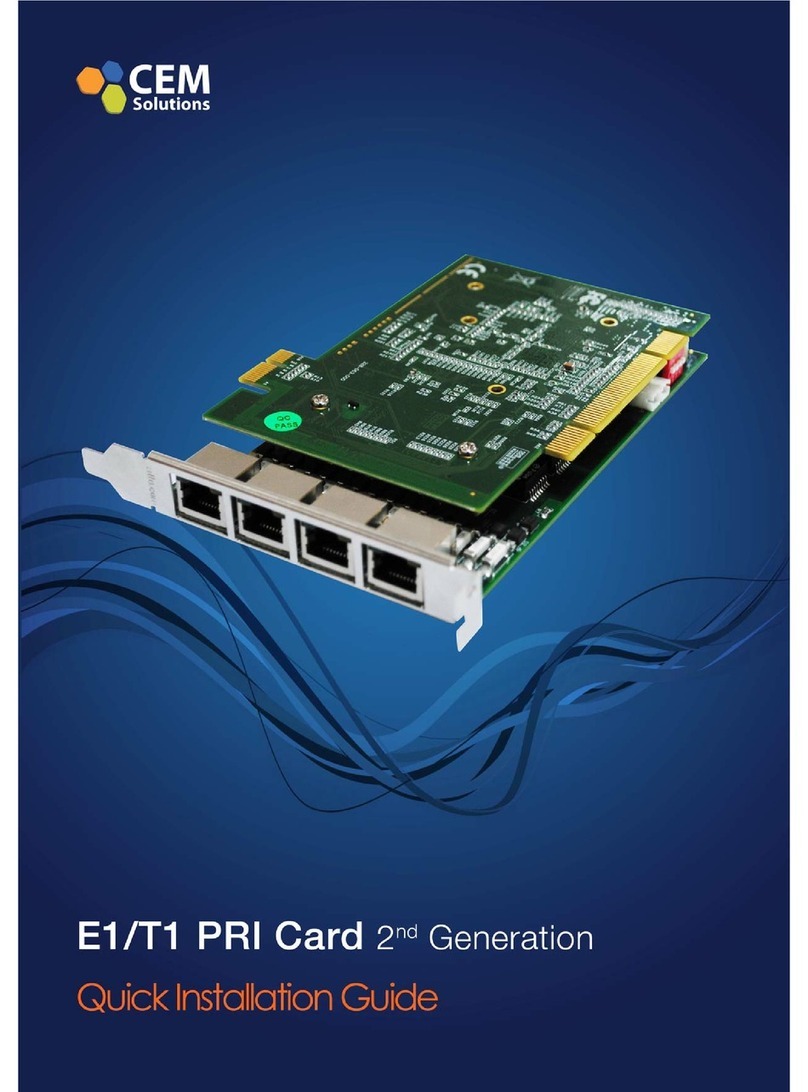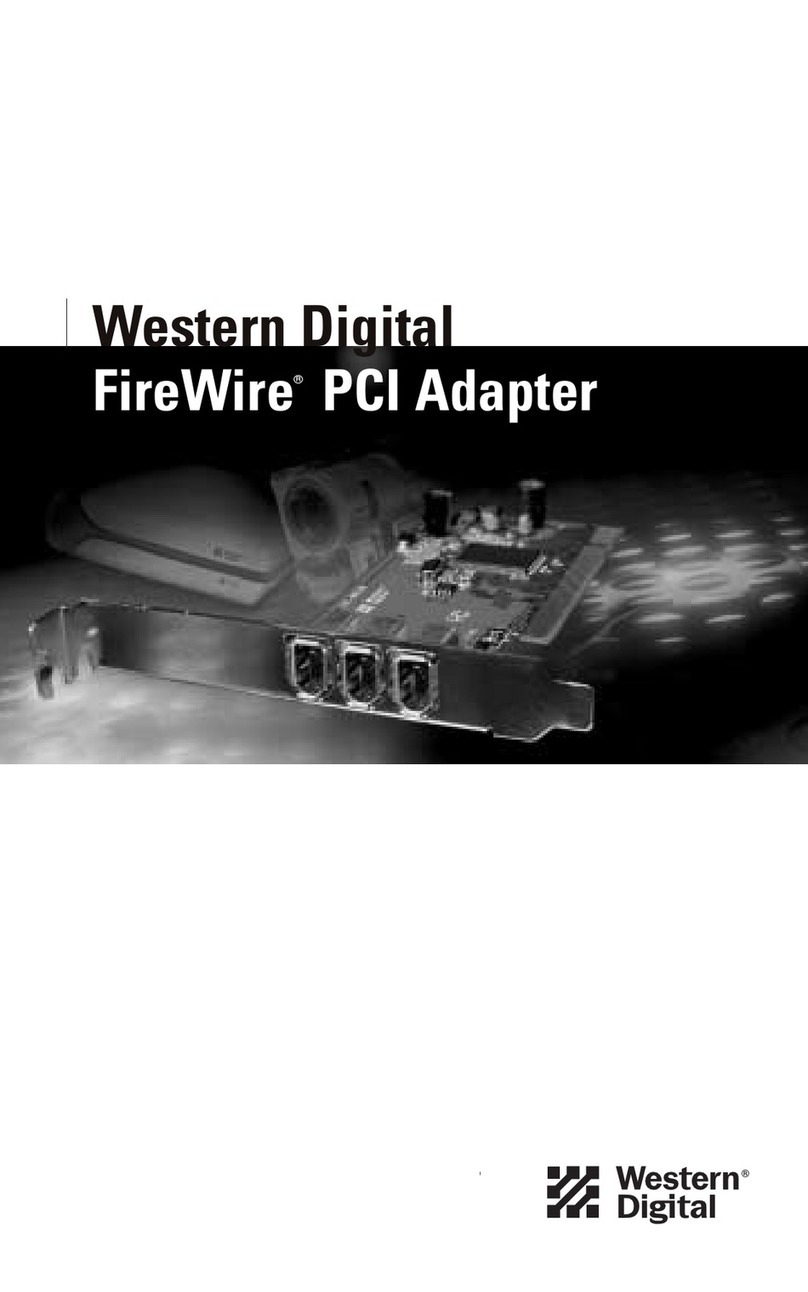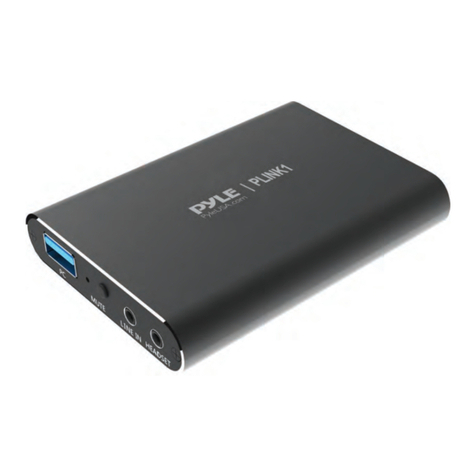
Kvaser PCIcanx User's Guide 3(20)
Kvaser AB, Mölndal, Sweden —www.kvaser.com
1 Table of Contents
Kvaser PCIcanx User's Guide .................................................................................................1
1Table of Contents..............................................................................................................3
2Introduction........................................................................................................................4
2.1 Scope of this document................................................................................................4
2.2 General Description .....................................................................................................4
2.3 PCIcanx features..........................................................................................................4
3Technical Specifications ..................................................................................................5
4Schematics.........................................................................................................................8
5The PCIcanx Hardware .....................................................................................................9
5.1 PCI-X and PCI slots .....................................................................................................9
5.2 The Isolated CAN Driver ..............................................................................................9
5.3 CAN Bus Termination ............................................................................................... 10
5.4 D-SUB connector ...................................................................................................... 11
5.5 The LED indicators.................................................................................................... 12
6Software Development Information.............................................................................. 13
6.1 Additional Documentation ......................................................................................... 13
6.2 A note on the different PCIcan versions ................................................................... 13
6.3 The PCI bus controller .............................................................................................. 13
6.4 Address decoding ..................................................................................................... 13
6.5 Interrupts................................................................................................................... 14
6.6 Registers in the Xilinx................................................................................................ 14
6.7 PCI Configuration Data ............................................................................................. 14
6.8 Configuration of the SJA1000................................................................................... 15
7Support............................................................................................................................ 16
8Disposal and Recycling Information............................................................................ 17
9References ...................................................................................................................... 18
10 Legal Information........................................................................................................ 19
10.1 Electromagnetic compability.................................................................................. 19
10.2 RoHS compliance statement................................................................................. 19
10.3 About this manual.................................................................................................. 19
10.4 Trademarks and patents........................................................................................ 19
11 Document revision history ........................................................................................ 20
